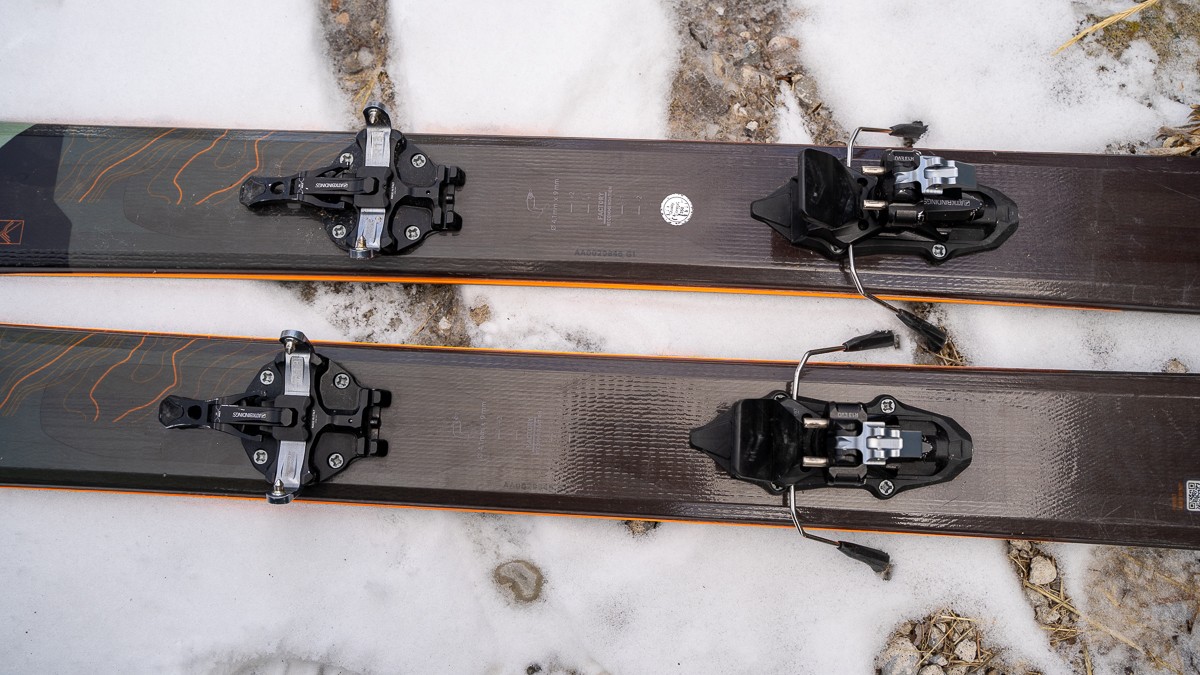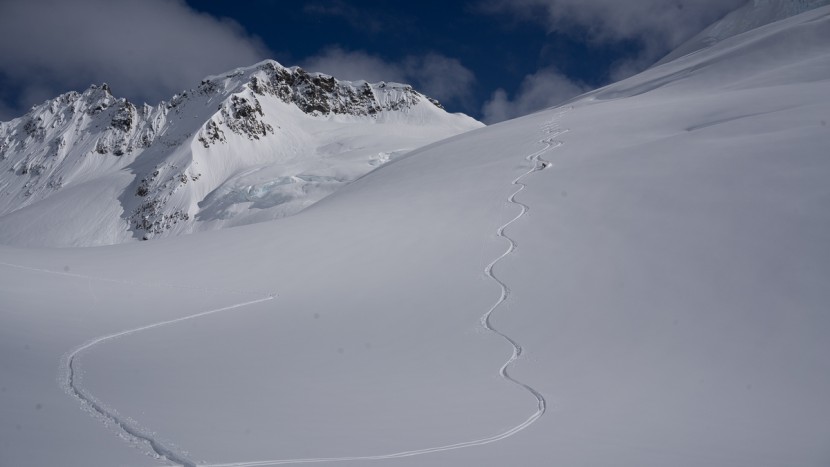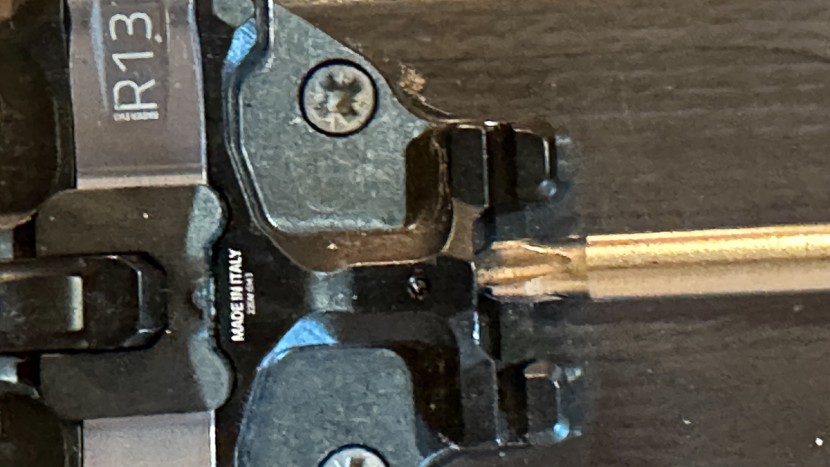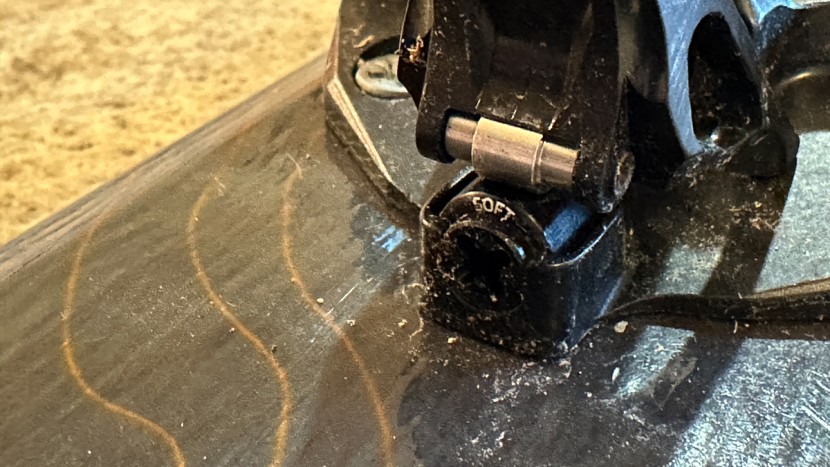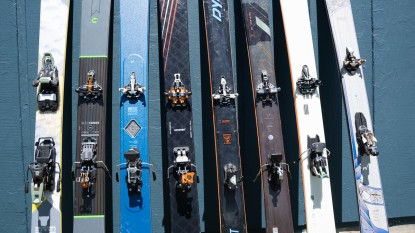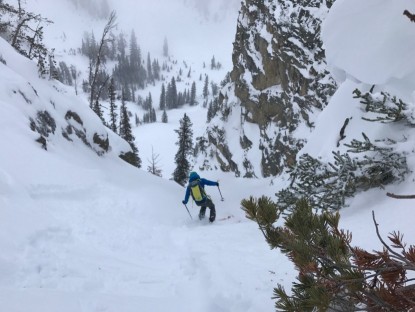Our Verdict
Compare to Similar Products
 This Product
ATK Raider 13 Evo | |||||
|---|---|---|---|---|---|
| Awards | The Best Overall AT Binding | The Other Best Binding | Best Ultralight Touring Binding | Best Bang for the Buck | Best Hybrid Binding |
| Price | $699.95 at Evo Compare at 3 sellers | $600 List $479.96 at Backcountry | $650 List $519.96 at Amazon | $280 List $279.95 at Amazon | $499.95 at Amazon Compare at 2 sellers |
Overall Score  |
|||||
| Star Rating | |||||
| Bottom Line | A high-performance tech binding that incorporates every top-of-the-line feature at a very reasonable weight | This binding has a carefully tailored selection of the features you need while keeping weight to a minimum. The result is an excellent binding for any backcountry skier | Ultralight bindings with broadly adjustable release values | An affordable tech binding that has seen iterative improvements over the decades, yet remains reliable and highly durable | Tours okay and skis downhill very well, it has all the downhill performance and design attributes you seek |
| Rating Categories | ATK Raider 13 Evo | Salomon MTN Summit... | Dynafit Superlite 150 | Dynafit Speed Turn | Marker Duke PT 13 |
| Weight (35%) | |||||
| Downhill Performance (25%) | |||||
| Touring Performance (20%) | |||||
| Ease of Use (15%) | |||||
| Construction Quality (5%) | |||||
| Specifications | ATK Raider 13 Evo | Salomon MTN Summit... | Dynafit Superlite 150 | Dynafit Speed Turn | Marker Duke PT 13 |
| Weight of 1 binding and screws, lightest possible configuration (in grams) | 396.5 | 310 | 179 | 364.5 | 1219 |
| Release Value Range | 5 to 13 | 6 to 12 | 4 to 13 | 4 to 10 | 4 to 12 |
| Brakes? | Yes | Optional | Optional | No | Integrated |
| Brake Width Options | 86, 91, 97, 102, 108, 120 mm | 80, 90, 100, 110 mm | 75, 90, 105 mm | N/A | 100, 125 mm |
| Weight of 2 bindings, common setup (pounds) | 1.75 | 1.86 | 0.79 | 1.61 | 5.38 |
| Weight of 2 bindings (in grams). Multiple options are noted where we have tested multiple options. | 793 | 843 (600 without brakes) | 358 (492 with adjustment plate) | 729 | 2438 (uphill mode is much lighter with toe piees in pack) |
| Stack height: average of toe and heel pin height (in mm) | 40 | 38 | 36 | 37.5 | 42 |
| Toe/heel delta: difference in height between heel pins and toe pins (in mm) | 12 | 8 | 10 | 17 | 14 |
| Meets ISO/DIN Standard? | No | No | No | Yes | Yes |
| Ski Crampon compatible? | Yes. "Standard" style. Not all crampons will be cross-compatible | Yes. "Standard" style. Not all crampons will be cross-compatible | Yes. "Standard" style. Not all crampons will be cross-compatible | Yes. "Standard" style. Not all crampons will be cross-compatible | Yes. Marker Duke PT specific. |
Our Analysis and Test Results
The ATK Raider line of bindings has recently captured the attention of long-time “touring-dork” ski mountaineers and resort converts alike. And these bindings deserve all of the attention they're receiving. A binding like the Raider 13 Evo is a testament to ATK's ability to integrate the most modern release technology into a lightweight touring binding. Whether you need or want all of these features is beside the point; these bindings are solid without adding much weight.
Weight
One Raider 13 Evo binding – including 97 mm brakes and mounting screws – weighs 397 grams. That's just 30-some grams heavier than the previous version of this flagship bindin (the Raider 12), which tipped the scales at 366 grams. However, it's important to point out that the older Raider 12 did not include the same release technology that's in the toe pieces of the Raider 13 Evo.
At this weight, there are no other close competitors to the Raider 13 Evo. Everything that weighs less has fewer features, especially in terms of release value and adjustments. However, the question stands: “Do you need this level of release value and adjustment?” The release characteristics in the Raider 13 Evo practically double its weight per binding relative to other bindings in our lineup, including other bindings from ATK. There are lighter-weight options that still include staple features like adjustable length, brakes, and three heel lifters. The most simple designs will allow you to cut the weight almost in half.
If you are concerned about overall weight or you simply don't want or need the sophisticated release features of the Raider 13 Evo, you can reasonably expect to trim significant weight per ski by looking elsewhere. Our test team was split – some feel you can get the same performance from a much lighter-weight binding – though many others agree that the slight extra weight of the Raider 13 Evo is a worthy tradeoff.
Downhill Performance
Evaluating downhill performance is a function of two very different criteria. First is how your boot is held to the ski during normal ski forces – this affects every turn you make. Next is the release characteristics of your binding, which will dictate the outcome in the event of some sort of crash. The Raider 13 Evo is excellent on both fronts.
Provided your gear is well-adjusted and well-maintained, no one expects their boot to come out of their ski unless they crash. Though some skepticism remains in some corners of the ski world, we're confident that any modern touring binding hits this minimum requirement. Very discerning skiers can isolate the “feel” of their binding and how it holds their boots to their skis. We understand this on a theoretical level but challenge any expert to parse out the binding's role in your overall downhill experience. Not even our test team – with access to hundreds of sets of skis across all manufacturers through a decade of testing – cuts it down to the level of control the binding alone offers. Ski feel is a function of many, many variables.
We can, however, confidently comment on technology and features and how those measurably affect release function. The Raider 13 Evo offers a wider range of release values than similarly lightweight bindings, which makes it a great option for all but the largest backcountry skiers. ATK designs accomplish this, first and foremost, by incorporating stiffer springs everywhere. Secondly, some of the release adjustment – the lateral heel release, in particular – is “delegated” to the toe piece because, unlike other touring tech bindings, there is a release adjustment in the toe of the Raider 13 Evo. This doesn't mean that the toe releases any differently than similar bindings, but it does mean that the lateral release value in the heel can be bumped up to 13.
In the interest of making release and retention more reliable, ATK integrates a spring-loaded mounting plate under the heel piece to provide more “heel elasticity.” All touring bindings have a certain amount of elasticity built into their design to accommodate ski flex and subsequent variation in the distance between heel and toe pieces. Traditionally, this is accomplished via a heel gap so that the pins can slide in and out of the heel fitting in the boot. The spring-loaded heel piece, on the other hand, “formalizes” this elasticity and is becoming a more popular design in modern tech bindings. As we noted, it's difficult to pinpoint whether or not this makes a big difference, but it certainly does no harm, nor does it add much weight, at least in the case of the Raider 13 Evo.
Touring Performance
Touring performance is much easier to assess in a tech binding. How many heel elevations does it have? How much does the binding tend to ice up? Does the toe piece allow for a full range of motion? How “positive” is the toe piece? Does it flex side-to-side, or does it lock in securely to hinge? The Raider 13 Evo tours great – its performance is average among competitors, and in our book, average is great. You really don't want any surprises with your bindings when all you want to do is focus on the vertical in front of you.
A low-profile construction freely sheds ice, for the most part. The binding offers three heel lifter levels, and the toe locks into place and allows for a full range of motion. Further, ATK integrates a touring mode lock adjustment. Most bindings have one touring lock mode: fully locked out. The Raider 13 Evo has two touring modes and is easily adjusted with a screwdriver. We toured extensively in both “hard” and “soft” modes and couldn't tell any difference between the two. We pulled out the mallet for an ol' fashioned “hammer test” – we pounded on the heel of the boot locked into the toe, and even in “soft” mode, couldn't get the binding to pre-release. So we opted to continue touring in that mode since there didn't seem to be any real drawbacks.
Ease of Use
Aside from the innovations to release function, the toe piece on the Raider 13 Evo is relatively simple, at least as it pertains to ease of use. It is no easier or more difficult than similarly designed bindings to step into. Similarly, transitions from uphill to downhill are fairly average, as are cycling between heel lifters.
We expected that the great number of moving parts – all of which enable various release adjustments – would collect more snow than typical. Fortunately, the minimalist construction and smooth finish have the tendency to shed snow. As a result, the Raider 13 Evo wasn't especially prone to icing, at least any more or less than similarly designed bindings. As we noted up top, we want our tech bindings to simply work well, and in this way, the simplicity of the Raider 13 Evo is a good thing.
Construction Quality
The result of more than average adjustment is that the Raider 13 Evo has many more small parts than your typical tech binding. Yet, we have not yet experienced any issues, nor do we foresee issues because of the relatively complex construction. Arguably, there are more parts to fail, but each part has been tested and proven in an iterative upgrade process.
Every piece that allows for unmatched adjustability of the Raider 13 Evo is well designed. Instead of overhauling and launching an untested binding in a single push, ATK incrementally added features over the years. The end result is a well-built touring binding that is poised to stand up to the rigors of backcountry skiing.
Should You Buy the ATK Raider 13?
Yes – if you are going to buy tech bindings in this weight class, the Raider 13 Evo is the best you can do. The sum of the features, especially the release value characteristics, is indeed an upgrade over most bindings on the market. However, you must recognize that it isn't a “silver bullet” to alpine-binding performance in the backcountry. It's also important to understand that the Raider 13 Evo is best utilized with a thorough understanding of all the different adjustments and features. If you understand that backcountry skiing is mostly slow, methodical, consequential, and strenuous, you might lean in a lighter direction. But for maximum downhill performance, you can't do better than the ATK Raider 13 Evo.
What Other AT Bindings Should You Consider?
You should compare the Salomon MTN Summit 12 BR, our other favorite binding, directly against the Raider 13 Evo. The Summit 12 isn't quite as adjustable, but you can choose whether or not you want to run them with brakes – if you opt out of brakes, you can save a meaningful amount of weight with only a nearly negligible penalty in downhill performance. If you want to save a lot of weight, check out the ATK Crest 10. It is half the weight of the Raider 13 Evo and still features adjustable release and length, three heel lifter levels, and brakes. Although you will give up most of these features, if you're looking for a bomb-proof pair of bindings at a bargain price, you cannot go wrong with the Dynafit Speed Turn.


